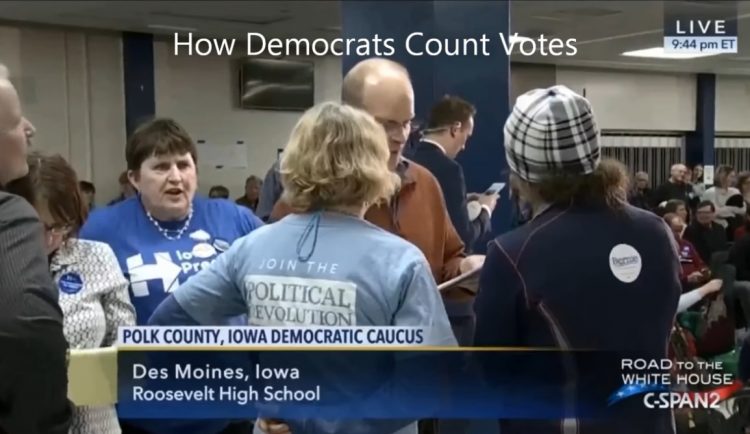As we head into 2020, Iowa Democrats are adopting new rules will simply make a uniquely complex caucus process even more complicated. That is not good news.
For presidential candidates, the year leading up to the first caucus and primaries is filled with many hours of fundraising and endless trips to Iowa, New Hampshire, and South Carolina.
Those three states—one Midwest, one Northern, and one Southern—hold the power to weed out most of the candidates.
Too bad Iowa is first on that list.
Yes, I just said that.
“The really important thing to remember about Iowa is not that it’s first because it’s important. Iowa is important because it’s first,” said Kathy O’Bradovich, political columnist for the Des Moines Register.
She acknowledges that Iowa didn’t really happen on purpose.
When the DNC changed party rules in 1968, Iowa had to go early starting in 1972 because of its bizarre and complicated convention process that takes months to complete.
That’s how we ended up with Iowa going first.
The small, rural and 94 percent white state is an awful proxy for the nation as a whole, and only roughly 20 percent of eligible caucus-goers actually turn out to participate on caucus night.
A handful of people in Iowa are kicking off the process to select the future leader of the free world.
Really?
And the caucus system makes it even more of a mockery.
It’s not a real election but rather a time-consuming circus of wheeling and dealing dominated by political activists.
Having watched the Iowa caucus process on C-SPAN since my teenage years, let me explain it as quickly as I can: Inside an elementary school gym (or some other public building) participants head off to corners of the room to publicly show their support for a candidate.
Undecided voters form their own group and stand in their own corner.
Then speeches are given by supporters of all the candidates in an attempt to move the undecided to their camp (and make sure their own supporters don’t bolt to a different candidate), much like herding cats.
When a vote is taken and a candidate does not receive 15 percent of the vote (this applies to Democrats only) they are removed, but their supporters can then join another group.
After several hours of wooing and voting, a final vote is taken and the group with the most people still in the room wins.
I am not making this up.
{READ: More About The Iowa Caucus in Jim Heath’s Front Row Seat At The Circus}
Prior to 1972, most national convention delegates were chosen by the caucus system but over time, voters realized the process was not fair and demanded change.
By 2008 only 10 percent of Democratic delegates and 15 percent of Republicans were chosen by a caucus.
So why in the world is the Iowa caucus still leading our presidential selection process?
VOTE IN OUR POLL!
I once asked that question to former Iowa governor Tom Vilsack on my television show Capitol Square.
The topic turned into a ten-minute debate on the merits of the caucus system.
Vilsack, who was also our Agriculture Secretary, politely argued the caucus system goes back to the beginning of our nation.
It allows unknown candidates to come from nowhere with strong organizational and people skills.
Without Iowa, he pointed out, Democrats may not have had Barack Obama as the nominee in 2008.
That may or may not be true.
What is certain is that the Iowa caucus for Democrats is not a one-person one-vote system.
Republicans are handed a blank sheet of paper, condemning some lesser known candidates to failure from the beginning.
Fewer voters participate because the process takes hours to complete.
I mean hours and hours on a weeknight!
So party activists (I’d use “hacks” but don’t really care for that word) are in large part doing the voting and deciding.
In my view, Iowa, which is making millions of dollars from the candidates and the worldwide attention it receives, should lead the process only if it switches to a primary.
Otherwise, New Hampshire should go first.
Vilsak smiled at that suggestion and said no.
We agreed to disagree and the debate about the Iowa caucus goes on.

